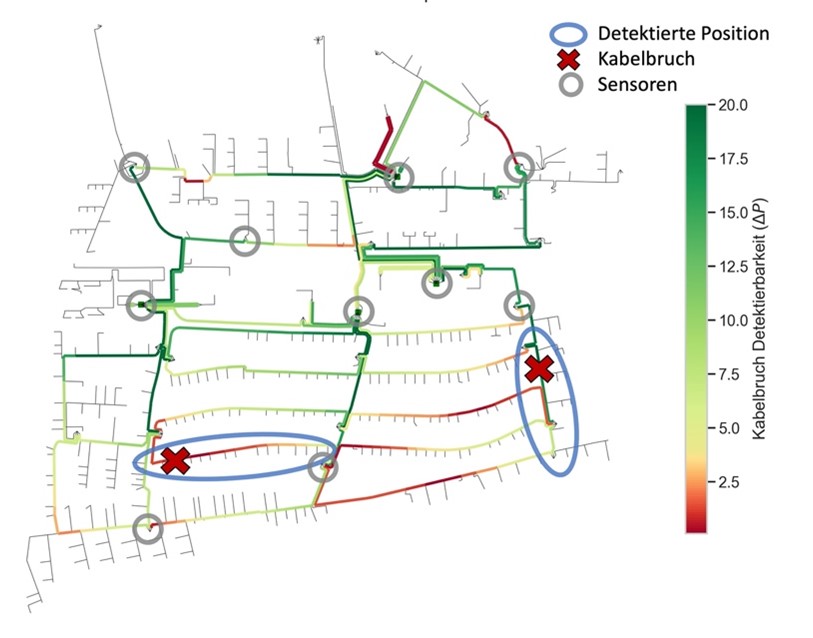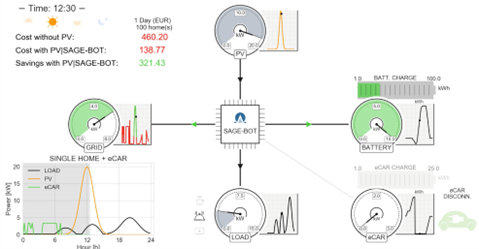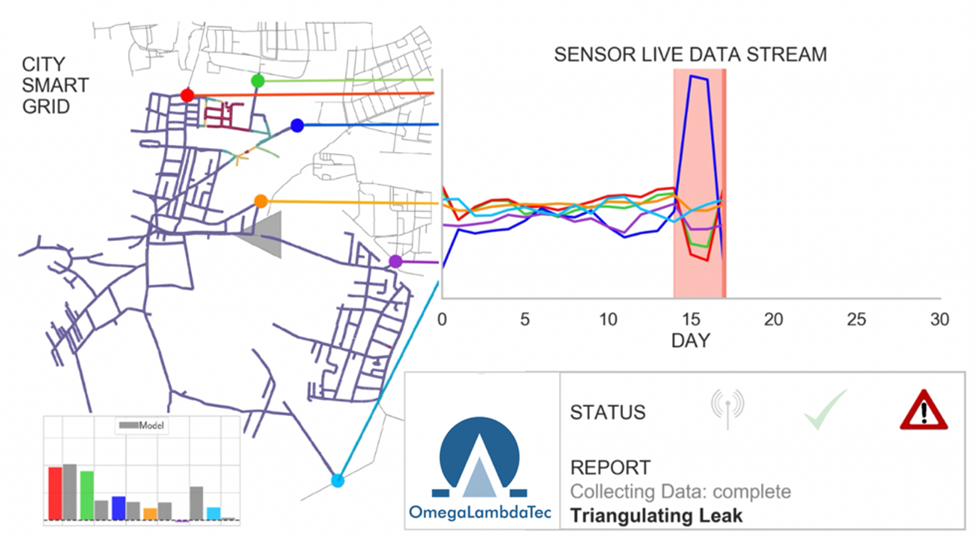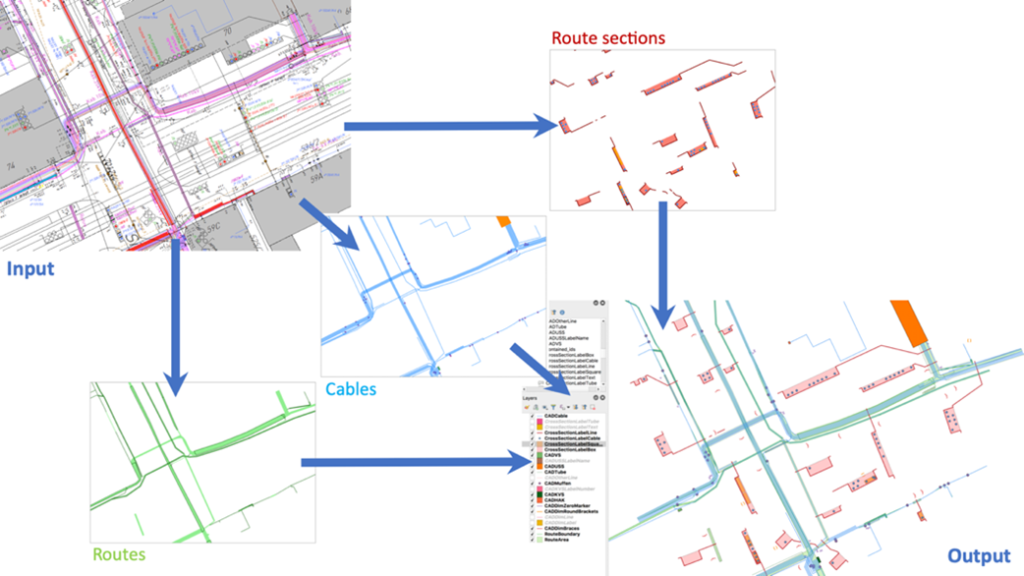Smart Energy and Utilities
OUR TARGET INDUSTRIES
With our Smart Data solutions, we create cross-industry added value and synergies.
The energy transition demands a radical rethinking of the electricity and water supply systems and processes, presenting new challenges for utilities and network operators. Digitalization offers various opportunities for intelligent grids and the successful realization of ambitious climate goals by enhancing efficiency while ensuring long-term supply security.
OmegaLambdaTec is a leading specialist in data-driven applications for Smart Infrastructures and Smart Grids, providing support to distribution network operators, transmission network operators, water utilities, and municipal utilities in fully exploiting the potential of intelligent grids.
OUR SERVICES
- Core algorithms for the energy transition
- Scenario simulators for the heat transition
- Automated detection and localization of network defects
- Simulation-based economic optimization of Smart Grid sensor systems
- Data-driven forecasting of production, consumption, and prices
- Energy system optimization
- Digital-twin simulations of networks using physical modeling
- AI-based network characterization and segmentation
- Data preparation for migration into next generation geographic information systems (GIS)
OUR AI ENGINE LIBRARIES
- HERACLES – the groundbreaking energy transition library
- PROMETHEUS – the scenario simulator framework for long-term business optimizations
EXAMPLES OF IMPLEMENTED USE CASES
Automated detection of cable defects in smart lowvoltage networks
Challenge and Objectives
Low voltage network operators face unprecedented challenges due to the energy transition, including an increase in direct renewable energy feed-ins and growing network complexity. Intelligent sensor technology can help address these issues by enabling continuous monitoring of the power grid. One critical application is the automated detection of cable breaks and other line defects, especially in heavily meshed networks.

OLT-Solution
- Automated clustering analysis and classification for all network islands of the network to create an AI-based characterization of the existing overall low voltage network
- Creation of a Digital Twin of the low voltage network
- Evaluation of feasibility and business potentials based on the Digital Twin of the network
- Economically optimized sensor positioning, determining the optimal number and locations for new sensors
- Automated sensor data analysis for continuous network monitoring and the identification, classification, and localization of network anomalies
Benefits
- Investment-optimized rollout of Smart Grid sensor measurement points in the low voltage network
- Data-driven risk classification for power outages across all network islands
- More efficient use of network maintenance teams through an automated condition monitoring and anomaly warnings
- Reduction of power outages through early identification of line defects
- Improved network insights and planning for network expansion through continuous load monitoring
Automated, yield-optimized real-time controller of decentralized energy systemsrendite-optimierte Echtzeit-Steuerung dezentraler Energie-Systeme
Challenge and Objectives
The transition to renewable energy sources has transformed households and businesses into both consumers and producers of electricity, thanks to photovoltaic systems. Batteries and electric vehicles provide additional internal energy storage and are connected to the grid. To address the increased complexity of the grid, new approaches are required for energetically and economically optimized real-time control of the entire system, which is achieved with our SAGE-BOT Controller (Smart Automated Green Energy & Battery-Optimizing Real-Time Controller).

OLT-Solution
- Automated data-driven forecasting of consumption, PV production, and electricity prices
- Real-time optimized control and management of battery storage
- Cost-optimized charging cycles for electric vehicles, maximizing the use of self-generated PV power
- Automated trading options with the electricity market
Benefits
- Yield and cost optimization of the entire system, including PV production, consumption, batteries, and the electricity market
- Optimal use of green PV-generated electricity
- Improved ROI, utilization, and life time of battery storage systems
- Reduced charging costs for electric vehicles while making the most of PV-generated power
- Load management and grid stabilization
- Optimized energy efficiency and energy management
Detection and localization of leakages in water distribution networks
Challenge and Objectives
Water losses occur in utility water distribution networks due to leaks in pipes. In some regions of Germany, these losses exceed 10%. It is essential to detect and localize leaks quickly to minimize water losses and reduce costs.

OLT-Solution
- Optimization of the sensor infrastructure with the help of a Digital Twin of the water network
- Development of a data-driven software solution for the automated leak detection and localization
- Continuous automated monitoring, signal extraction, and leak detection for each flow sensor • Highly accurate localization of the leak position using a Digital Twin of the water network and the newly developed method of Virtual Triangulation
Benefits
- Simulation-based determination of the optimal sensor locations for the rollout and performance evaluation of different rollout scenarios
- Quick response times from leak occurrence to repair
- Detection and localization of both large and small leaks, down to water losses of about 1m3/h
- Faster, more targeted, and efficient leak localization by the repair team leads to reduced search costs, faster leak repair, and more efficient personnel use
- Sustainable reduction of water losses in the drinking water network and mitigation of collateral damage
Data enablement and enrichment of the grid data inventory for electricity distribution networks
Challenge and Objectives
A significant portion of the data inventory in distribution network operators is often in the form of schematic plans. These plans are often not geospatially accurate and lack relationships between objects. The goal of data enablement and enrichment is to create a consolidated data inventory with object relationships, accurate geospatial positioning, and electrically correct modeling that can be migrated to a modern geographic information and operations system (GIS).

OLT-Solution
- Feasibility study to demonstrate the general feasibility and possibilities and develop a concept for implementing data enablement and enrichment for the specific data inventory of the customer
- Development of a custom software for carrying out the actual data enablement and enrichtment, including algorithm development and implementation for the specific data inventory of the distribution network operator
- Building a hybrid data processing pipeline with a combination of fully automated and manual steps to rectify data errors within an interactive
Benefits
- Solid evaluation on the feasibility and a detailed concept for the data enablement and enrichment, serving as a foundation for further planning
- The most efficient and quickest way to intelligently prepare legacy data and migrate it to a modern geographic information system.




